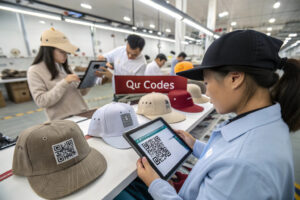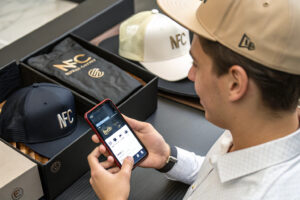You’re ready to start your private label hat business—but there’s one number you need to know first: the minimum order quantity (MOQ). Whether you’re a new fashion brand or a growing Amazon seller, MOQ affects everything—from unit cost and style flexibility to risk and inventory.
Most private label hat manufacturers in China set MOQs between 100 and 500 pieces per style, depending on material, customization, and production method.
In this article, I’ll break down what influences MOQ in hat manufacturing, how to negotiate better terms, and how different hat types compare in order volume flexibility.
What Factors Determine MOQ in Hat Manufacturing?
MOQs aren’t random—they’re calculated based on how much material, setup, labor, and risk a factory needs to cover. Every customization adds complexity—and cost.
MOQ depends on fabric availability, logo type, hat structure, dyeing method, and packaging requirements.

Key Drivers That Affect MOQ
| Factor | How It Affects MOQ |
|---|---|
| Fabric Type | Rare materials = higher MOQ |
| Logo Process | Embroidery has lower MOQ than silicone or metal |
| Hat Structure | Complex 7-panel or trilby = higher setup |
| Custom Dyeing | Custom Pantone = 300–500 min |
| Packing & Tags | Custom boxes may require 1000+ units |
As Apparel Entrepreneurship explains, every supply chain component (not just hats) has its own MOQ, which must be met to justify production.
What Are Typical MOQ Ranges by Hat Type?
Not all hats are created equal—some styles are more flexible in production. Simpler hats require fewer specialized materials or less shaping, which often means lower MOQs.
Baseball caps and beanies have the lowest MOQ; structured hats like fedoras and custom brimmed hats require more.

MOQ by Common Hat Styles
| Hat Type | Typical MOQ (Custom Private Label) |
|---|---|
| Baseball Cap | 100–300 pcs |
| Bucket Hat | 100–250 pcs |
| Beanie | 100–200 pcs |
| Fedora | 300–500 pcs |
| Cowboy Hat | 500–1000 pcs |
| Panama Hat | 400–600 pcs |
| Snapback (with 3D patch) | 250–500 pcs |
As seen on Printful, many newer brands use print-on-demand to test styles—then shift to MOQ-based manufacturing to improve margins and branding.
How to Lower MOQ Without Sacrificing Quality?
If your budget or warehouse can’t handle 500 units, you’re not out of options. A smart sourcing strategy can help you lower MOQ without cutting corners.
Use stock fabrics, repeat logos, flexible sizes, and combine SKUs to reduce per-style MOQ.

Tactics to Reduce MOQ
- Use In-Stock Fabrics: Avoid custom dyeing by selecting what the factory already has.
- Share Embroidery Files: Use the same logo across multiple hat styles.
- One Size Fits All: Reduce the complexity of size splits.
- Combine Styles: e.g., 500 units across 2 styles = 250 each.
- Skip Retail Boxes: Ask for polybag only or recycled kraft wrap.
For more tips, check Alibaba’s MOQ guide or Fibre2Fashion.
What Won’t Work?
- Asking for full customization at 50 pcs
- Changing trims per size or per color
- Free sampling under MOQ (unless you're a repeat buyer)
What Is the Cost Impact of Different MOQ Levels?
MOQ and cost go hand in hand. The more you order, the lower your per-unit cost becomes. But you don’t always have to max out to get savings.
Every 100-unit increase above MOQ can lower per-hat price by $0.10–$0.30 depending on complexity and materials.

Price Scaling Example for a Custom Dad Hat
| Quantity | Unit Price (USD) |
|---|---|
| 100 pcs | $3.80 |
| 300 pcs | $3.30 |
| 500 pcs | $3.05 |
| 1000 pcs | $2.85 |
We recommend testing small, but scaling to 300+ for better profit margins, especially if you're reselling at retail price points of $18–$25.
For forecasting help, check out online tools like ZonGuru or Shopify's product margin calculator.
Conclusion
Understanding MOQ is key to launching and scaling your private label hat line. The numbers vary—but with a smart sourcing plan, you can minimize waste, maintain quality, and keep prices profitable. Whether you’re testing 100 caps or preparing for a 1000-unit drop, we help you hit the right balance between customization, quantity, and budget.
At Global-Caps, we offer flexible low-MOQ programs and over 800 in-stock fabrics, so you can start small—but scale like the big brands.







